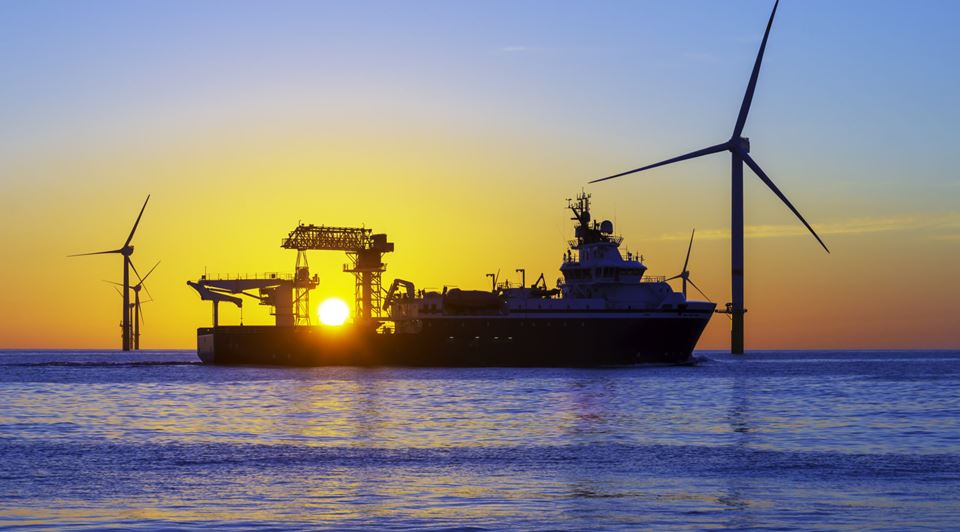11 June 2021. D-Day for Norway’s offshore wind power, when Tina Bru, the current Norwegian Minister of Petroleum and Energy, presented the award criteria for licences for offshore wind power development on the Norwegian continental shelf.
In the lead up to the announcement, multiple experts from outside the energy industry claimed that “profitability is still uncertain”.
However, if we look at how offshore wind power has developed up to now, it isn’t particularly outlandish to predict that the cost of bottom-fixed wind turbines will soon match future international prices for sustainable electricity.
Similarly, although floating wind farms are currently more expensive than bottom-fixed wind farms, as they are in an earlier development phase, they also have the potential to become more competitive in the future.
But costs do not lower by themselves. The key to reducing costs lies in a combination of five research fields – as well as an additional sixth factor: the size of the licences for offshore wind power development.
In other words, the larger licenses parties get to build, the quicker the costs will lower.
Good news from Norway’s government
Therefore, the message from Tina Bru that Norway is now all about large-scale development of offshore wind power is good news. The more we build ourselves, the more mature our technology will become – and the greater Norway’s opportunity to become a market leader in the offshore wind power industry will be.
Multiple articles from Norwegian daily newspaper Dagens Næringsliv indicate that Norwegian industry is extremely interested in the areas that have already been opened for offshore wind development: Sørlige Nordsjø II – bottom-fixed wind turbines – and Utsira Nord – floating wind turbines.
Not only does increased offshore wind power development mean more renewable energy for Europe and Norway, but it’s also important for Norwegian industry and electrification efforts. More green energy can strengthen energy-intensive industries, create jobs, and give Norway a competitive advantage.
A tripartite way to success
Our success with offshore wind power hangs on a rope consisting of three threads: development, research and innovation. If one or more of those threads is removed, the rope will fray.
For example, if we focus solely on development, we will produce limited results. In addition, there are still research challenges that must be addressed in order to reduce costs and lay the foundation for future innovation and value creation.
However, we are clearly moving in the right direction. Ten years ago, the goal for the industry was that bottom-fixed offshore wind farms would have a production cost of NOK 1 per kilowatt hour in 2020. Instead, they managed to halve that cost.
Promising results
Nonetheless, bottom-fixed wind turbines will always incur costs due to the amount of offshore installation work required. The advantage of floating wind turbines is that they can be assembled in sheltered waters and then towed out to sea.
In addition, 80 per cent of areas in the world with the potential for offshore wind power development have a depth of more than 60 metres, which are too deep for bottom-fixed wind turbines. If we are to make the most of our wind power resources, floating wind turbines are a necessity.
As said before, floating wind farms are currently more expensive than bottom-fixed wind farms, as they only exist in pilot projects and the technology is still immature.
However, the results from research, innovation and development are promising, and it’s entirely possible that offshore wind farms will be able to compete with bottom-fixed wind turbines – maybe even by 2030.
Profitable innovations
Norwegian industrial and research efforts to achieve more cost-effective offshore wind power solutions are in full swing, with the full support of the Research Council of Norway.
The Norwegian Centre for Environmentally Friendly Research (FME) Nowitech (2009–2017) was responsible for developing the basis of 40 innovations that the consulting firm Impello estimates to have a potential present value of NOK 50 billion.
In addition, the Research Council of Norway recently launched a new centre for offshore wind research, FME Northwind, which will be led by SINTEF. Joining us on the team are NTNU, UiO, NGI and NINA plus industry partners.
Five key research fields
At FME Northwind, we will continue to investigate the five key research fields – key because the world’s ability to master these particular fields will determine the cost of offshore power production:
- Digital solutions and models for more efficient operation and maintenance of offshore wind turbines. This includes optimising the energy output of offshore wind farms and the use of “digital twin” methods to predict maintenance needs.
- Robust structures that must be able to support heavy turbines in a cost-efficient way.
- Maritime operations for the secure and efficient installation and maintenance of offshore wind farms.
- Subsea power grids, both in terms of technology and solutions, which enable large wind farms to be established far out at sea.
- Sustainable development that will contribute to the expansion and operation of offshore wind farms in a way that respects both nature and people.
These are all areas where Norwegian industry has excellent opportunities for delivering products to the international market.
This article was first published in the Norwegian daily newspaper Dagens Næringsliv (DN) and is republished here by courtesy of DN.

